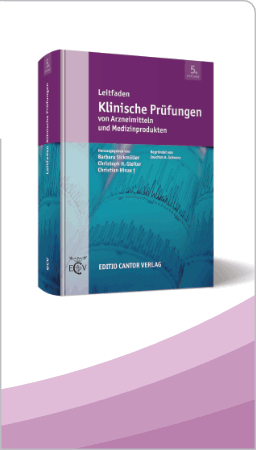Behandlung nicht spezifikationskonformer Analysenergebnisse Ermessensspielräume der sachkundigen Person bei OOS-Resultaten während der Chargenfreigabe Dr. Elke Podpetschnig-Fopp Wiewelhove GmbH, Ibbenbüren Corresponding author: Dr. Elke Podpetschnig-Fopp, Wiewelhove GmbH, Dörnebrink 19, 49479 Ibbenbüren (Germany), Fax +49 (0) 54 51-94 01 90, e-mail: E.Podpetschnig-Fopp@wiewelhove.de Handling of Out of Specification Test Results/Discretion of the Qualified Person in Batch Certification when a Batch does not fully meet the Requirements
This report mainly deals with the handling of Out of Specification (OOS) test results in medicinal product manufacture. It is important to point out that it only represents the state of scientific knowledge till the end of 2005, because the report is based on corresponding conferences, which have taken place in 2004 and 2005. Therefore while looking for helpful advices, especially the corresponding EMEA statement, published in January 2004, which explicitly deals with the discretion of the Qualified Person in batch certification, is discussed in the light of the legal European requirements. The importance of a suitable Standard Operation Procedure (SOP) for an OOS investigation is pointed out.
Talking about possible strategies to minimize OOS results emphasis is laid on the proper establishment of suitable acceptance criteria.
Very important are the possible discretion possibilities of the Qualified Person (QP) within an OOS investigation in case of his final decision about release or rejection of an affected batch. Step by step the relevant phrases and sections of the international and the national German law are checked in order to present support for QP’s interpretation of results within the necessary decision finding.
The legal definitions are well in line with international used terminology of general quality assurance handling, such as critical, major and minor defects. In any case of confirmed OOS results there has to be carried out a corresponding risk analysis concerning their influence on quality, efficacy and stability of the product. If only a minor defect is revealed, this procedure can be restricted to the question of technological relevance. It is shown, that minor defects can be allowed in principle but acceptance or rejection of the affected batch should be connected to their defects frequency, which can be determined by “inspection of attributes”. Key words Abweichung • Arzneimittelproduktion • Attributinspektion • EMEA-Papier • OOS-Ergebnisse • Sachkundige Person |




